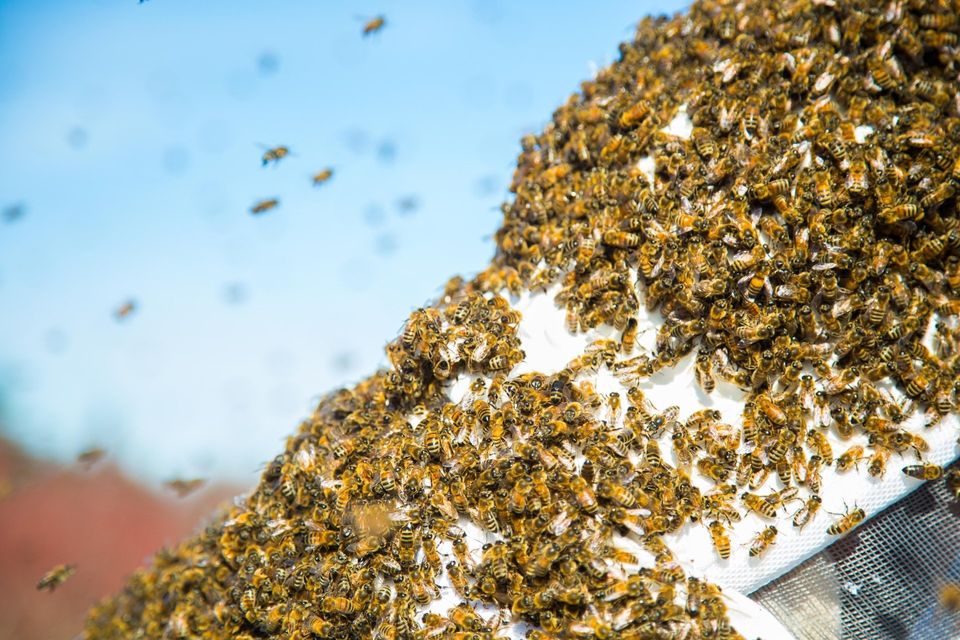Honey bees and bees in general.
A bee or not a bee – that is the question
We are coming up to that time of year again where we will be getting a lot of early call outs for wasps. Wasps they are probably not, however – they will be bees 99% of the time (that’s the heading question sorted then): honeybees, miner bees, mortar bees and bumblebees (mainly white-tailed bumblebees and early honeybee swarms).
We try our hardest not to mistreat these types of “pests” as they are for the most part harmless.
What do we do in these situations and what do we advise? ?
Depending on the type of bee, along with the location is we remove and collect them humanely, transport them to our own garden or local apiary (for honeybees) to carry on living the life they should.
Honeybees
Last year we collected multiple bee swarms and removed honeybees from buildings and elsewhere. The bees numbered some 200,000+ in total. They were then relocated to our local apiary (a group of beehives kept by an expert beekeeper) for preservation and honey production. Last year we also started using a phone app called www.bee.watch created by a local company and beekeeper. This app can be used by the general public for free where a honeybee swarm could be reported for local beekeepers to collect for a small fee. This way we save bees and stop pest controllers from destroying the swarm unnecessarily (honeybees are not protected and can legally be treated, however, this is a morally challenging subject in which we would much rather save than destroy).
The reporting software can be found on our bee swarm page here
If there is a current colony of honeybees already in your property we can sometimes remove it depending on location and access. If it is safe, we will always do our best to come up with a solution. This service is quoted on a per job basis so contact us for a quote today.
Bumblebees
There are many types but the most common we are called to are white-tailed bumblebees.
For the past two years, I have had white tail bumblebee nests in my garden where they lived until they met the natural end of their cycle. This is before the numbers we rehoused to our properties last year. I have four kids, two dogs and budgies all in the vicinity of these nests and they didn’t harm one of them. For bumblebee nests, we charge a standard call out fee for collection and rehoming.
Mortar bees
Mortar bees are the ones you see going in and out of holes in the mortar of buildings (one per tunnel/hole). What they are doing is creating a nest. This contains a small food supply (for the eventual larvae) and an egg before they fill the entrance with a soil substance to act as a door/protection. Again, these are harmless and it would take a lot for them to sting. I have these on my property as well – right where myself and kids sit in the spring and summer. If you are worried, the advice would be to repoint the mortar of your property before you see them appear.
Miner bees
These can become a slight nuisance as you may have a single bee or hundreds of them. They dig tunnels in the ground and it’s one tunnel per bee as with mortar bees. They can be worrying especially with young kids or animals. Our advice is to wear shoes in the garden. The only time these are likely to sting is if they get stepped on. If you want to discourage them you could set off a sprinkler however they are again a vital part of the ecosystem and are only around for a very short period of time.
Sooooo …
This is a basic rundown of what to expect bee-wise in the upcoming months, all of these bees will be active before the wasp start becoming a problem.
Please feel free to get in contact if you have any questions and please consider letting these bees live out their life cycle where they choose to.
All Rights Reserved Shire Pest Solutions

